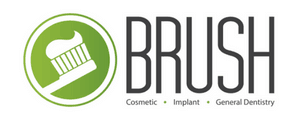How Sedation Dentistry Can Help with Dental Anxiety
Going to the dentist can be a stressful experience for many people. Dental anxiety is a common issue that affects both children and adults alike. This fear can be so intense that it stops people from getting the dental care they need. The good news is that there are ways to manage dental anxiety, and one effective method is sedation dentistry.
Sedation dentistry is designed to help patients relax during dental procedures. This approach can ease the stress associated with dental visits, making it easier for people to seek the care they need. Whether it’s the fear of pain or a bad past experience, sedation dentistry offers a solution to overcome these hurdles. By understanding the variety of sedation options available, patients can choose the best one for their needs and comfort levels.
With the help of sedation dentistry, a trip to the dentist doesn’t have to be a daunting experience anymore. Our dental team is committed to ensuring your visit is as comfortable as possible, allowing you to focus on maintaining a healthy and bright smile.
Understanding Dental Anxiety: Causes and Effects
Dental anxiety is a common issue that affects many people of all ages. It can range from mild uneasiness to severe fear, making it difficult for some to even contemplate a dental visit. The causes of dental anxiety can vary widely. For some, it stems from a past negative experience at the dentist’s office. Others may feel anxious due to fear of pain, the sound of dental tools, or feeling vulnerable while lying back in the dental chair. Children can also develop dental anxiety if they sense their parents’ nervousness about dental visits.
The effects of dental anxiety go beyond just nervousness. People who suffer from this condition often avoid going to the dentist, even for routine cleanings and exams. This avoidance can lead to a decline in oral health, resulting in issues like cavities, gum disease, and even tooth loss. Additionally, dental problems left untreated can contribute to other health issues, including cardiovascular disease and diabetes. Understanding these causes and effects helps our dentists in University District Seattle offer compassionate care and specialized techniques to make each visit comfortable.
What Is Sedation Dentistry and How Does It Work?
Sedation dentistry is an excellent way to help patients manage their dental anxiety. It involves the use of medication to help you relax during dental procedures. There are different levels of sedation that can be used depending on your level of anxiety and the complexity of the procedure. Some sedation methods allow you to stay awake but feel calm and relaxed, while others might make you drowsy or even put you into a deep sleep.
The process starts with a comprehensive discussion between you and your dentist. We will evaluate your dental history, anxiety levels, and any previous experiences you’ve had with sedation. Based on this information, we will recommend the type of sedation best suited for you. The most common types include mild sedation with nitrous oxide (laughing gas), moderate sedation with oral medications, and deep sedation with intravenous (IV) medications. Each type of sedation has its own advantages, and our goal is to ensure your safety and comfort throughout the procedure.
By using sedation dentistry, our dentists in University District Seattle can perform necessary dental treatments while reducing the stress and discomfort many patients feel. Sedation options make it possible to get through even the most complicated procedures with ease, ensuring that anxiety never stands in the way of good oral health.
Different Types of Sedation Used in Dentistry
Sedation dentistry offers various options to cater to different levels of anxiety and the nature of dental procedures. Each type of sedation is designed to provide a unique level of relaxation, ensuring your dental visit is as comfortable as possible.
- Nitrous Oxide (Laughing Gas): This is a mild form of sedation inhaled through a mask. It helps you feel relaxed and less anxious but stay conscious. Nitrous oxide wears off quickly, allowing you to drive home safely after your appointment.
- Oral Sedation: For moderate anxiety, we might prescribe an oral medication taken before your appointment. These pills produce a calming effect and may make you a bit drowsy, although you’ll still be awake. Because the effects take a while to wear off, you’ll need someone to drive you home.
- IV Sedation: This type offers a deeper level of sedation and is administered through an intravenous line. It’s used for more invasive or lengthy procedures. You’ll remain in a semi-conscious state and able to respond to questions, but you may not remember much about the procedure afterward. Recovery from IV sedation requires some time, so you’ll need someone to take you home.
Each type of sedation has its advantages, and the choice depends on your level of anxiety, the complexity of the dental work, and your medical history. We’ll work closely with you to determine the best option to ensure a stress-free experience.
Preparing for Your Visit: Tips for a Stress-Free Appointment
Preparing for your dental visit can make the experience smoother and more comfortable. Here are some tips to help you get ready and ensure everything goes as planned.
- Communicate Openly: Let us know about your dental anxieties and any past experiences that have contributed to your fear. This information helps us tailor the sedation method and overall treatment to your specific needs.
- Follow Pre-Sedation Instructions: Depending on the type of sedation, you might need to fast for a few hours before your appointment. Ensuring you follow instructions is crucial for your safety and the effectiveness of the sedation.
- Wear Comfortable Clothing: Choose loose-fitting clothes to ensure you feel relaxed during the procedure.
- Arrange Transportation: If you’re undergoing a deeper level of sedation, make sure you have someone to drive you home. It’s essential for your safety since the sedation effects can linger.
- Plan Ahead: Clear your schedule for the rest of the day. It’s best to take it easy and allow your body time to recover after the procedure.
- Relaxation Techniques: Learn and practice some relaxation techniques like deep breathing or meditation to help calm your nerves before your visit.
By taking these steps, you can minimize stress and make your dental visit as smooth as possible. Your comfort and peace of mind are our priorities.
Dental anxiety shouldn’t prevent you from receiving the care you need. Understanding the causes of dental anxiety and the benefits of sedation dentistry can transform your dental visits from a source of stress to a more comfortable experience. With options like nitrous oxide, oral sedation, and IV sedation, we can ensure that your dental treatments are both effective and anxiety-free.
At Brush Dental, we are dedicated to providing a stress-free environment for all our patients. If you’re struggling with dental anxiety and are interested in sedation options in Univeristy District Seattle, we are here to help. Contact us today to schedule your appointment with our family dentists and take the first step toward a more comfortable and relaxed dental experience. Your healthy smile is our top priority!







